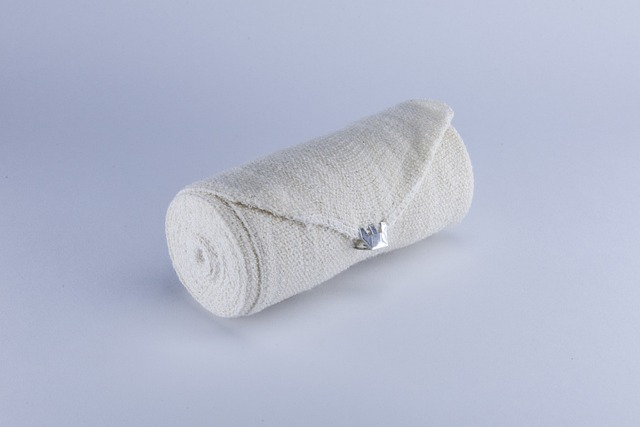Essential Guide: Proper Frequency for Changing Gauze After Tooth Extraction
Welcome to our essential guide on the proper frequency for changing gauze after tooth extraction! If you’ve recently undergone a tooth extraction, you may have been provided with gauze pads to help control bleeding and promote healing. While the process of changing gauze might seem straightforward, ensuring optimal healing requires understanding the appropriate frequency for gauze replacement. In this article, we will walk you through the necessary steps, provide expert tips, and address common questions to assist you in proper gauze management after tooth extraction. So, let’s dive in and learn how to navigate this crucial post-extraction process with confidence and ease. Your smile will thank you for it!
1. Understanding the Importance of Gauze in Tooth Extraction Recovery
After a tooth extraction, proper care is essential for a quick and successful recovery. One crucial element in post-extraction care is the use of gauze to control bleeding and promote healing. Here’s why gauze is so important in the recovery process:
1. Controlling bleeding: Gauze plays a vital role in managing bleeding after a tooth extraction. By applying gentle pressure on the extraction site, gauze helps to form a blood clot, which is necessary for the healing process. It also prevents excessive bleeding, which could delay the healing process or cause additional complications. Remember to replace the gauze when it becomes soaked and continue to apply pressure for the recommended duration to ensure effective clotting.
2. Preventing infection: Gauze helps in creating a barrier that protects the extraction site from harmful bacteria and debris. By covering the socket, gauze acts as a shield against potential contaminants and minimizes the risk of developing an infection. Change the gauze regularly as instructed by your dentist or oral surgeon to keep the area clean and properly protected. Keeping the extraction site clean can significantly reduce the chance of complications and aid in a smooth recovery.

2. The Role of Gauze in Promoting Healing After Tooth Extraction
After a tooth extraction, gauze plays a vital role in promoting healing and preventing complications. Here’s what you need to know about the benefits of using gauze post-extraction:
- Controlled Bleeding: Gauze pads or rolls help control bleeding by applying gentle pressure to the extraction site. This is important as excessive bleeding can hinder the formation of a blood clot, leading to a dry socket. By absorbing any excess blood, gauze helps promote clot formation and speeds up the healing process.
- Protection and Comfort: Placing a gauze pad over the extraction site provides a protective barrier, guarding against irritants such as food particles, debris, and bacteria that may cause infection. It also offers a cushioning effect, reducing discomfort and providing relief from pain. Remember to change the gauze regularly to maintain hygiene and prevent infection.

3. How Often Should You Change Gauze After Tooth Extraction?
Proper aftercare is crucial for a smooth recovery after a tooth extraction. One important aspect of aftercare is changing the gauze regularly to aid in healing and prevent infection. Here’s some helpful information regarding how often you should change the gauze:
- During the first hour after your extraction, it’s recommended to change the gauze every 30 minutes or as instructed by your dentist. This helps control bleeding and allows a clot to form in the extraction site.
- After the initial hour, you can reduce the frequency to changing the gauze every two to three hours. Remember to always wash your hands thoroughly before removing the old gauze and inserting a fresh one.
- If bleeding persists beyond the first 24 hours, it’s advisable to consult your dentist. They may suggest using a moistened tea bag instead of gauze, as the tannic acid in the tea helps promote clotting.
Changing the gauze regularly is essential for maintaining cleanliness and promoting healing. However, if you experience excessive bleeding, intense pain, or any other concerns, don’t hesitate to contact your dentist for guidance and support throughout your recovery journey.

4. Step-by-Step Instructions for Properly Changing Gauze Following a Tooth Extraction
After a tooth extraction, it is crucial to properly change the gauze to ensure proper healing. Follow these step-by-step instructions to effectively change your gauze:
- Wash your hands: Before touching the gauze or your mouth, make sure you wash your hands with soap and warm water to prevent any potential infections.
- Open a new sterile gauze package: Ensure the packaging is intact and unopened, and carefully remove a fresh piece of gauze from the package. Remember to be gentle to avoid any unnecessary pain or complications.
- Position the gauze over the extraction site: With clean hands, gently remove the old gauze from your mouth by pulling it out slowly. Take the fresh gauze and fold it into a small square or roll, positioning it directly over the extraction site.
This is followed by a few additional steps to properly secure the gauze, minimize discomfort, and aid in the healing process:
- Bite down gently: Close your mouth and softly bite down on the new gauze. This helps apply pressure to the extraction site, assisting in the formation of a blood clot and reducing bleeding.
- Avoid excessive spitting or rinsing: Spit or rinse gently if necessary, but take care not to create excessive pressure or motion in your mouth, which can disrupt the blood clot.
- Replace gauze as needed: Change the gauze every 30 minutes or as advised by your dentist until the bleeding subsides. If bleeding continues heavily after several hours, contact your dental professional for further guidance.

5. Tips to Ensure Comfort and Quick Recovery When Changing Gauze
Changing gauze after a surgical procedure or injury is an essential part of the healing process. To make this experience as comfortable and efficient as possible, follow these helpful tips:
- Prepare a clean and sanitized space: Set up a designated area, such as a dressing table or bathroom counter, where you can safely change the gauze. Make sure to disinfect the surface and wash your hands thoroughly before proceeding.
- Gentle removal: Slowly peel off the old gauze to avoid any unnecessary pulling or discomfort. If it is sticking to the wound, dampen it with saline solution or water to ease removal.
- Proper wound cleaning: Before applying fresh gauze, cleanse the wound gently with mild soap and water, or follow the instructions provided by your healthcare provider. Be sure to rinse well and pat dry with a clean towel.
- Appropriate dressing size: Always select the correct size of gauze to adequately cover the wound without excessive tightness. This promotes proper airflow and prevents discomfort or irritation.
Additionally, consider the following:
- Don’t forget to change regularly: It is crucial to change the gauze regularly, as instructed by your healthcare provider, to maintain cleanliness and promote healing. This helps prevent infection and ensures optimal recovery.
- Seek professional advice: If you notice any signs of infection, increased pain, or any concerning changes in the wound, consult your healthcare provider immediately. They can provide guidance and make any necessary adjustments to your dressing routine.
By following these tips, you can ensure a comfortable and speedy recovery during your gauze changing routine. Remember to always prioritize your well-being and reach out to your healthcare provider if you have any concerns.
6. The Benefits of Consistent Gauze Changes in Tooth Extraction Healing
When it comes to recovering from a tooth extraction, consistent gauze changes play a vital role in promoting faster healing and preventing complications. Not only does changing gauze regularly aid in maintaining proper oral hygiene, but it also offers several other benefits that can enhance your healing process.
1. Prevents infection: By changing the gauze regularly, you minimize the risk of bacteria buildup in the extraction site. This decreases the chances of infection, a common concern after tooth extraction. A clean and sterile environment will promote healing and reduce discomfort.
2. Controls bleeding: Regular gauze changes help control bleeding by providing a barrier between the extraction site and saliva. By applying enough pressure on the gauze, you can effectively control and reduce bleeding, allowing blood clot formation, which is essential for healing to begin.
3. Reduces discomfort: Consistent gauze changes ensure that any residual blood or debris is removed from the extraction site. This helps minimize discomfort and irritation, allowing the area to heal smoothly. Additionally, gauze changes can provide a soothing effect, making your recovery more comfortable.
4. Promotes faster healing: Regularly changing the gauze helps in maintaining a clean environment and allowing the blood clot to form properly. A clean and stable blood clot is crucial for proper healing, as it acts as a protective layer over the extraction site, preventing infection and reducing pain. This promotes faster healing and reduces the chances of complications.
To ensure optimal healing and reduce the risk of complications, make sure to follow your dentist’s instructions regarding gauze changes after a tooth extraction. Remember, consistent gauze changes provide numerous benefits, including preventing infection, controlling bleeding, reducing discomfort, and promoting faster healing. By taking proper care of your extraction site, you’ll be on your way to a healthy and speedy recovery.
7. Reducing the Risk of Infection: Why Regular Gauze Changes Are Crucial
Regularly changing the gauze applied to wounds plays a vital role in reducing the risk of infection. It may seem like a simple step, but it can make a significant difference in the healing process. Here’s why regular gauze changes are crucial:
1. Promotes proper wound healing: Regular gauze changes help to create a clean environment around the wound, preventing bacteria from multiplying and causing infection. When you change the gauze, you are removing any dirt, debris, or bacteria that may have accumulated on the wound, allowing it to heal more effectively. Additionally, fresh gauze helps to absorb any excess fluid or discharge, maintaining optimal moisture levels for proper healing.
2. Prevents cross-contamination: By changing the gauze regularly, you minimize the risk of cross-contamination, where bacteria from the wound can spread to other parts of the body or to another person. Properly disposing of the used gauze and washing your hands before and after the procedure reduces the likelihood of introducing harmful organisms. Remember to always use a new pair of sterile gloves, ensuring a sanitary environment throughout the dressing change.
In conclusion, maintaining a clean and bacteria-free environment around a wound is crucial for its effective healing. Regularly changing the gauze helps to promote proper wound healing and prevents cross-contamination. By taking these simple steps, you can significantly reduce the risk of infection and improve the overall outcome of the healing process. Stay proactive and keep your wounds clean!
8. Discovering the Ideal Frequency for Changing Gauze After Tooth Extraction
After a tooth extraction, it is crucial to change gauze regularly to promote healing and prevent infection. However, many people are unsure about the ideal frequency for changing gauze. Here, we provide some guidelines to help you determine how often you should change your gauze:
Factors to Consider:
- Severity of the extraction: If you had a simple extraction, changing gauze every 30 minutes to an hour on the first day is usually sufficient. For more complex extractions, gauze changes may be necessary every 30 minutes for the first few hours.
- Amount of bleeding: If bleeding continues, it is essential to replace the gauze frequently. Remember to apply gentle pressure when biting on the new gauze to control the bleeding.
- Personal comfort: Changing gauze too frequently can disrupt the formation of a clot, while changing it too infrequently can lead to a buildup of bacteria. Find a balance that keeps the area clean and comfortable without excessive disturbance.
Recommended Frequency:
- First day: Change gauze every 30 minutes to an hour, or when it becomes saturated with blood.
- Next 24 to 48 hours: Gradually taper to changing gauze every 3 to 4 hours, or as needed for bleeding control.
- After 48 hours: Continue changing gauze as needed, focusing on maintaining cleanliness and comfort.
Remember, it is essential to follow your dentist or oral surgeon’s instructions regarding gauze changes, as individual circumstances may vary. If you have any concerns or questions, don’t hesitate to reach out to your dental care provider for guidance.
9. Smart Strategies to Remember When It’s Time to Change Your Gauze
When it’s time to change your gauze after a medical procedure or a wound dressing, it’s important to follow smart strategies to ensure proper healing and minimize the risk of infection. Here are some helpful tips:
1. Wash your hands: Before removing the old gauze or applying a new one, always wash your hands with soap and water to minimize the transfer of bacteria. This simple step goes a long way in maintaining good hygiene.
- 2. Gently remove the old gauze: Carefully peel back the old gauze, making sure not to disturb any scabs or open wounds. If the gauze sticks to the wound, dampen it with clean water to help loosen it.
- 3. Cleanse the wound (if instructed): If your healthcare provider has advised cleaning the wound before applying a new dressing, use a gentle saline solution or an antiseptic wipe to clean around the wound gently.
- 4. Assess the wound: Take a moment to examine the wound for any signs of infection, such as redness, swelling, or discharge. If you notice any concerning changes, contact your healthcare provider for further guidance.
Remember, it’s essential to change your gauze regularly as instructed by your healthcare provider. By following these smart strategies, you can help promote healing and reduce the risk of complications after a medical procedure or injury.
10. Expert Insights on How Often to Change Gauze After Tooth Extraction
Gauze is commonly used after tooth extraction to control bleeding and promote healing. But how often should you change the gauze to ensure optimal recovery? Experts recommend the following insights:
1. Follow your dentist’s instructions: Every tooth extraction is unique, and your dentist will provide specific instructions on changing the gauze. It is essential to follow these instructions carefully for proper healing and to minimize the risk of complications.
2. Change gauze regularly: In general, it is recommended to change the gauze every 30 to 60 minutes or as instructed by your dentist. This frequency ensures that the gauze remains clean and effective in absorbing any residual blood. Frequent changing also helps maintain a sterile environment around the extraction site, reducing the risk of infection.
Remember, following these expert insights and maintaining good oral hygiene practices, such as gently rinsing your mouth with saltwater, will help ensure a smooth and successful recovery after tooth extraction.
Frequently Asked Questions
Q: Why is changing gauze after a tooth extraction essential?
A: Changing gauze after a tooth extraction is essential for several reasons. Firstly, it helps control bleeding by applying gentle pressure to the extraction site. Secondly, it prevents the buildup of blood clots, which can impede the healing process. Lastly, it helps keep the extraction site clean, reducing the risk of infection.
Q: How often should I change gauze after a tooth extraction?
A: The frequency of changing gauze after a tooth extraction depends on the severity of bleeding. Initially, it is recommended to change the gauze every 30 minutes for the first two hours following the extraction. After that, you can gradually increase the interval between changes to every hour or as needed. Remember, it’s important to follow your dentist’s specific instructions based on your individual case.
Q: Can I reuse the same gauze after changing it?
A: No, it is not advisable to reuse the same gauze after changing it. Used gauze may contain bacteria or absorb blood, which can affect the healing process or increase the risk of infection. Always use fresh, sterile gauze for each change.
Q: Should I continue changing gauze overnight after a tooth extraction?
A: It is generally recommended to change gauze overnight for the first 12 to 24 hours after a tooth extraction to promote proper healing. However, if bleeding has significantly subsided and the extraction site is no longer actively bleeding, you may discontinue using gauze at night. Always consult your dentist for specific instructions based on your situation.
Q: What should I do if bleeding persists even after changing gauze?
A: If bleeding persists even after changing gauze, there are a few steps you can take. First, make sure you are applying enough pressure to the extraction site when biting down on the gauze. If bleeding continues, bite on a moistened tea bag placed over the site as the tannins in tea can help encourage clot formation. If bleeding still doesn’t stop after 30 minutes of consistently applying pressure, contact your dentist immediately for further guidance.
Q: How long should I continue changing gauze after a tooth extraction?
A: The duration of gauze changing after a tooth extraction varies from person to person. On average, you may need to change gauze every hour for the first 12-24 hours. As bleeding subsides, you can gradually decrease the frequency. Typically, the need for changing gauze completely stops within 24-48 hours, but always follow your dentist’s instructions for a proper timeline based on your case.
Q: What are the signs of infection after a tooth extraction?
A: It’s important to be vigilant for signs of infection after a tooth extraction. Common signs include increased swelling, severe pain that isn’t alleviated by prescribed medications, fever, pus or discharge from the extraction site, or a foul taste in your mouth. If you experience any of these symptoms, contact your dentist promptly for evaluation and treatment.
Q: Can I eat or drink while using gauze after a tooth extraction?
A: It is best to avoid eating or drinking while using gauze after a tooth extraction. The presence of gauze in your mouth can make eating and drinking difficult, and there is a risk of dislodging blood clots or causing bleeding. Stick to consuming cool liquids and soft foods that don’t require much chewing until your dentist advises you differently.
Q: Is it normal for bleeding to recur after changing gauze?
A: It is normal for a small amount of bleeding to recur after changing gauze. However, if the bleeding becomes excessive or persists despite changing gauze and applying pressure, it’s important to contact your dentist. Excessive bleeding can interfere with the healing process and may require additional intervention.
Q: Can I brush my teeth around the extraction site after changing gauze?
A: It is generally recommended to avoid brushing the extraction site for the first 24 hours after the procedure. After that, you can gently brush your teeth, but be cautious around the extraction site to avoid dislodging blood clots or causing irritation. Your dentist will provide specific instructions on when and how to resume regular oral hygiene practices.
Conclusion
In conclusion, we hope that this essential guide has provided you with valuable insights on the proper frequency for changing gauze after tooth extraction. Remember, taking care of your oral health is crucial during the healing process, and maintaining good hygiene practices can significantly contribute to a faster recovery.
By regularly changing the gauze, you will reduce the risk of infection, minimize discomfort, and promote optimal healing of the extraction site. As our friendly dentist suggested, removing and replacing the gauze every 30 to 45 minutes during the first few hours is crucial to control bleeding effectively.
Furthermore, don’t forget to use clean hands when handling gauze, and avoid touching the extraction site unnecessarily. Always follow the instructions provided by your dentist and consult them if you have any concerns or experience unusual symptoms.
Remember, each individual heals differently, so it is important to pay attention to your body’s signals. If you notice excessive bleeding, severe pain, or prolonged discomfort, it is essential to seek professional dental advice promptly.
We sincerely hope that this guide has answered your questions and helped you ensure a smooth and comfortable recovery after tooth extraction. Taking care of your oral health is a small investment that leads to a lifetime of confident smiles!
Wishing you a speedy recovery,
[Your Name]






